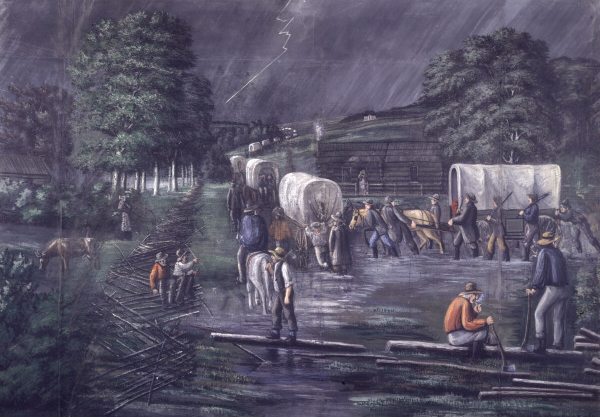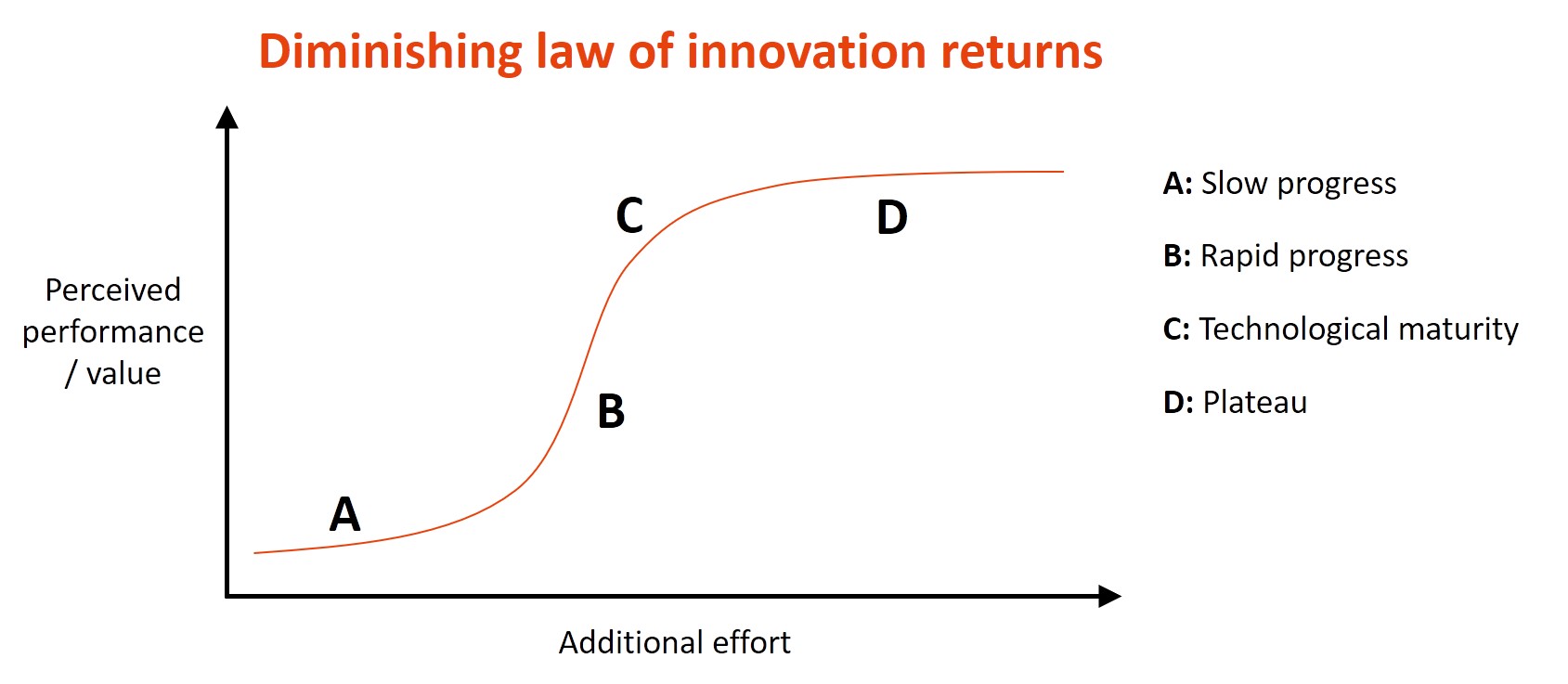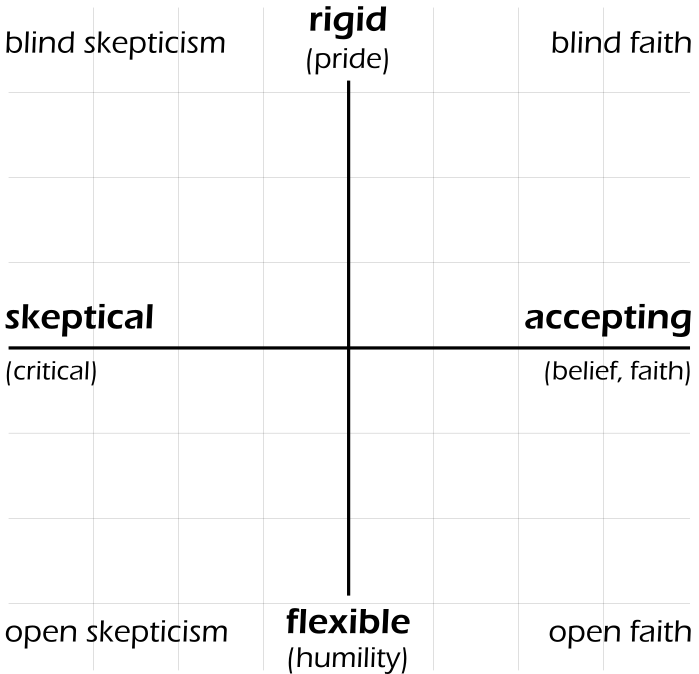Was Zion’s Camp a failed mission? This last week’s Sunday School lesson on D&C 98-105 focused on the trial of the saint’s march in 1834 on a rescue mission to Jackson County Missouri to “redeem” Zion. There were some important takeaways I gained from my reflection and lesson on this topic.

Historical Sketch
I am assuming the reader will be familiar with these events from Church history, but to give some context, here is a brief sketch of a few highlights:
Tension between local Missourians in Jackson County and the growing body of Mormon immigrants was rising to a point where in July of 1833, demands were made that the Mormons leave on threat of physical expulsion. On July 23 they were given 6 months to leave Independence. In August, over 800 miles East in Kirtland Ohio, Joseph Smith recorded two revelations where God gave direction and counsel regarding the situation with their fellow saints in Missouri.
In November 1833 Missouri saints were expelled from Jackson County. On December 16-17 Joseph received another revelation known today as Doctrine and Covenants section 101. In it the Missouri saints are told that their sufferings were in consequence of their transgressions, and a parable was given, “that you may know my [the Lord’s] will concerning the redemption of Zion.” “Zion,” referring to the place, Jackson County Missouri, and “redemption” being understood to mean recovery of the lands that had been lost to them. In a revelation given on February 24 of 1834, Joseph Smith was directed to gather a number “of the strength of [God’s] house” to “go up with you unto the Land of Zion.”
A body of volunteers (close to 200 men and a number of women) gathered and in early May, left on the near 900 mile journey toward Missouri. The main purpose of the mission does not appear entirely clear from what we read in D&C 101:35-36, but the call to go was given and men and women responded.
“The redemption of Zion must needs come by power,” is what the D&C 101 revelation says, and the Lord would “raise up unto my people a man who shall lead them as Moses led the children of Israel.” As one historian put it, “It sounds like a call to action, but the comparison was to Moses leading Israel out of bondage, and not Joshua invading Canaan.” (Richard Bushman, Rough Stone Rolling, p. 236)
The trek took over a month. As might be imagined, when an organized and armed band of Mormons began to approach the territory where Missourians had driven their fellow adherents away (and with no intent of letting them return) it had all the makings for an impending armed conflict. Joseph had no desire to engage in a battle of arms and hoped that his petition for help from Governor Dunklin to assist in the saint’s cause, would result in assistance from the state militia to help recover their lost lands. No such help was granted, and on July 22 a revelation (D&C 105) was given, and the camp was disbanded. Some stayed in Missouri, while others, including Joseph Smith, returned home.
Rebellious Hearts
So, what are we to make of this account? In response to the suffering and loss of property from persecution that the saints in Missouri were enduring, Joseph was called by God to organize a body to go redeem their brothers in Zion (D&C 103:1). Then, after gathering their forces for two months and marching over 800 miles for another month and a half more, God gave a revelation that essentially disbanded the camp without accomplishing the mission they set out to do.
In the hours of reflection over the course of a month of study and preparation for the lesson I was to give in Gospel Doctrine class, I was drawn to conclude that the outcome, known by the Lord from the beginning, was immutable, and any attempt to change the course of things would be futile. This, because of something Joseph later wrote from his own conclusion of what took place at the end of the journey. As the camp disbanded, a devastating outbreak of cholera attacked its ranks.
“Long afterward, Joseph remembered the suffering that week. ‘While some were digging the grave others stood sentry with their fire arms, watching their enemies.’ The camp was trapped between the hatred of the Missourians and the onslaught of cholera. Responding to the shrieks of pain that filled the camp, Joseph gave the victims flour and whiskey and ministered by laying on hands. Nothing worked. Each time Joseph laid hands on a victim, the diseased passed into his own body. ‘I quickly learned by painful experience,’ he later wrote, ‘that when the Great Jehovah decrees destruction upon any people, makes known his determination, man must not attempt to stay his hand.’ … Joseph remembered the unsettling contradictions. ‘Elder John S. Carter was the first man who stepped forward to rebuke it, and upon this, was instantly seized, and became the first victim in the camp.’ The men who buried Carter ‘united, covenanted and prayed, hoping the ideas would be staid; but in vain, for while thus covenanting, Eber Wilcox died.'”
(Richard Bushman, Rough Stone Rolling, p. 245-246. emphasis mine)
I reasoned that perhaps the attempts to mingle in something that God had already decreed applied to more than the cholera outbreak. What if Joseph’s prayers and attempts to intervene were futile gestures, even from the onset of the trek to Missouri?
It was because of their “jarrings, and contentions, and envyings, and strifes, and lustful and covetous desires” that they “polluted their inheritances” (D&C 101:6). They had failed to bring forth the required fruit, remaining heedless of the Lord’s warnings (see for example the Lord’s warnings in D&C 97:25-26; 98:21-22; 103:8-10). The Lord used the Missouri citizens as His hand of judgment to scourge the condemned saints in His attempt to persuade them to repent and no longer treat lightly His word (see for example D&C 97:25-27; 101:1-2, 51; 103:3-4, 8; 105:2, 6). Still seeing no Divine purpose behind their distress, they railed against their Missouri persecutors. Despite their suffering, they were not sufficiently humbled to repent. Instead, they breathed out threats and expressed hope to gain vengeance against the same Missouri mobs to whom the Lord had given power to afflict and inspire them to repent.
Why, then, would the Lord call the saints in Kirtland to go on a rescue mission? In Joseph’s position, can he simply sit back and do nothing? Even as late as February when the call was given to gather their strength and march (D&C 103), the saints were told they could still repent and turn things around and recover their lost lands. We read how it was “in consequence of their transgressions” that the Lord “suffered the affliction to come upon” the saints in Missouri (D&C 101:2). But also remember that similar words of condemnation were given to the Kirtland saints, “For they do not forsake their sins, and their wicked ways, the pride of their hearts, and their covetousness, and all their detestable things.” (D&C 98:20). Were there lessons and testing and trial that those who were called to march needed to learn as well?
Prayers of the Righteous
It wasn’t until the morning of the lesson, as I sat reflecting and revisiting the lesson material, that a new perspective of these events emerged from the pages I was reading. While it was certainly true that sufferings were “in consequence of their transgressions“, I began to see that among them there was a category of “many of whom are truly humble and are seeking diligently to learn wisdom and to find truth.”
Verily, verily I say unto you, blessed are such, for they shall obtain; for I, the Lord, show mercy unto all the meek, and upon all whomsoever I will, that I may be justified when I shall bring them unto judgment.
(D&C 97:1-2)
A distinction was being made between two types of people who were enduring persecution and suffering.
[N]evertheless, there are those that must needs be chastened, and their works shall be made known. The ax is laid at the root of the trees; and every tree that bringeth not forth good fruit shall be hewn down and cast into the fire. I, the Lord, have spoken it.
(ibid v. 6-7)
While on the other hand:
Verily I say unto you, all among them who know their hearts are honest, and are broken, and their spirits contrite, and are willing to observe their covenants by sacrifice—yea, every sacrifice which I, the Lord, shall command—they are accepted of me. For I, the Lord, will cause them to bring forth as a very fruitful tree which is planted in a goodly land, by a pure stream, that yieldeth much precious fruit.
(ibid v. 8-9)
Four days later, in the August 6 revelation, the Lord addressed the saints in Missouri with some words of encouragement:
[I]n everything give thanks; Waiting patiently on the Lord, for your prayers have entered into the ears of the Lord of Sabaoth, and are recorded with this seal and testament—the Lord hath sworn and decreed that they shall be granted.
(D&C 98:1-2)
A promise is given that “prayers” have been heard and a decree given that “they shall be granted“. Followed up with this powerful covenant from the Lord:
Therefore, he giveth this promise unto you, with an immutable covenant that they shall be fulfilled; and all things wherewith you have been afflicted shall work together for your good, and to my name’s glory, saith the Lord.
(ibid v. 3)
In unmistakable language that cannot be taken lightly, the Lord has promised and decreed that He will answer …
“prayers”.
We are not given any additional information or specifics about what these prayers contained. In a letter to Edward Partridge and other church leaders several days later, Joseph gives one other key of what is included in this powerful covenant that the Lord promised:
“I verily know that he will spedily deliver Zion for I have his immutible covenant that this shall be the case but god is pleased to keep it hid from mine eyes the means how exactly the thing will be done.”
(“Letter to Church Leaders in Jackson County, Missouri, 18 August 1833,” p. [1], The Joseph Smith Papers, emphasis mine)
In the language of scripture, “speedily” often means “surprisingly,” “in an unexpected way,” or “being caught off-guard.” (See e.g., Isaiah 48:3).
Four months later, in response to further requests for information from the Lord regarding the saints in Zion, the December 16-17 revelation was given. Section 101 opens with:
Verily I say unto you, concerning your brethren who have been afflicted, and persecuted, and cast out from the land of their inheritance— I, the Lord, have suffered the affliction to come upon them, wherewith they have been afflicted, in consequence of their transgressions; Yet I will own them, and they shall be mine in that day when I shall come to make up my jewels. Therefore, they must needs be chastened and tried, even as Abraham, who was commanded to offer up his only son. For all those who will not endure chastening, but deny me, cannot be sanctified.
(D&C 101:1-5)
As it relates to the two types or categories of people being tried, take note of the phrase “my jewels“. This phrase occurs four times in the standard works. In the instance found in 3 Nephi, Christ is quoting from Malachi chapter 3:
And they shall be mine, saith the Lord of Hosts, in that day when I make up my jewels; and I will spare them as a man spareth his own son that serveth him. Then shall ye return and discern between the righteous and the wicked, between him that serveth God and him that serveth him not.
(3 Ne 24:17-18)
I want to ask the question, if God is using the Missouri mobs to inspire the saints to repent, what of the more righteous among them? Is it fair for them to suffer these indignations as well? I believe God is addressing this very thing by including the parable of wheat and tares in this revelation:
That the work of the gathering together of my saints may continue, that I may build them up unto my name upon holy places; for the time of harvest is come, and my word must needs be fulfilled. Therefore, I must gather together my people, according to the parable of the wheat and the tares, that the wheat may be secured in the garners to possess eternal life, and be crowned with celestial glory, when I shall come in the kingdom of my Father to reward every man according as his work shall be; While the tares shall be bound in bundles, and their bands made strong, that they may be burned with unquenchable fire.
(D&C 101:64-65)
Gem formation requires five things for mineral crystallization to occur. Ingredients, Temperature, Pressure, Time, and Space. To become the Lord’s “jewels“, the righteous will need to be proven by being subjected to testing, alongside the chastisement being imposed upon the unrighteous. Another way to look at it is, the response to the trials and testing can be a determining factor in which type or category of person you will become.
As we look at the conclusion of this Zion’s camp story, in the revelation where the camp is disbanded, we read that God again confirms the promise that we looked at earlier in section 98:
But inasmuch as there are those who have hearkened unto my words, I have prepared a blessing and an endowment for them, if they continue faithful. I have heard their prayers, and will accept their offering; and it is expedient in me that they should be brought thus far for a trial of their faith.
(D&C 105:18-19)


